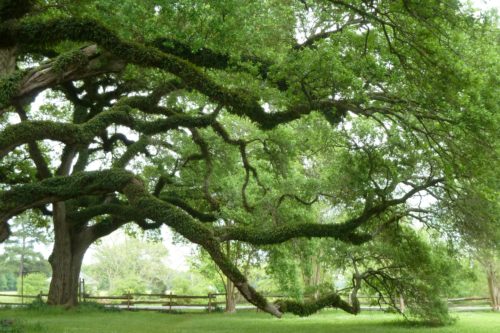 Purdue University - Extension - Forestry and Natural Resources
Purdue University - Extension - Forestry and Natural Resources
Got Nature? Blog

In the first study of its kind, scientists David Nowak and Eric Greenfield of the U.S. Forest Service Northern Research Station have calculated just how beneficial trees are to human health. As well as providing oxygen, shade and beautification, trees help to remove air pollution by catching harmful airborne particles on the leaves and branches and by absorbing gases like nitrogen dioxide (NO2), ozone (O3), and sulfur dioxide (SO2). Nowak and Greenfield concluded that trees save over 850 human lives a year and prevent over 670,000 cases of acute respiratory symptoms from diseases like asthma, bronchitis, emphysema and chronic pulmonary obstructive disease (COPD).
While trees in suburban areas remove a higher amount of pollution due to their large quantity, urban trees have a greater direct effect on human health and monetary savings due to their closer proximity to people. Altogether, trees improved air quality in the continental U.S. by less than 1% in 2010, according to computer simulations iTree and BenMAP. This might not sound like much, but this means that trees removed 17.4 million tons of air pollution and saved the country over $6.8 billion in medical expenses. This really goes to show how much of a difference trees can add to the quality of our lives, especially in urban areas.
Resources
Tree and Forest Effects on Air Quality and Human Health in the United States, U.S. Forest Service Northern Research Station
Urban Trees Help Us Breathe, National Association of State Foresters
Trees Pay Us Back In the Midwest Region, U.S. Department of Agriculture (USDA)
iTree, U.S. Forest Service
BenMAP, United States Environmental Protection Agency
U.S. Forest Service Northern Research Station

Recent Posts
- Take Your Turkey Fun Further – Wild Bulletin
Posted: May 9, 2024 in Forestry, How To, Wildlife - Paddle for Data – Wild Bulletin
Posted: in Aquaculture/Fish, Great Lakes, Ponds, Wildlife - IISG Adds New Water Safety Videos
Posted: May 8, 2024 in Aquaculture/Fish, Aquatic/Aquaculture Resources, Community Development, Great Lakes, Wildlife - Invasive Bradford-Callery Pear: Why it is so detrimental and what to plant instead
Posted: in Forests and Street Trees, How To, Invasive Plant Species, Urban Forestry - Trees and Storms – Mitigating the Damage
Posted: May 7, 2024 in How To, Urban Forestry - New Indiana Woodland Steward Newsletter, Your Forest and Wildlife Resource
Posted: in Timber Marketing, Wildlife, Woodlands - Farmers Helping Hellbenders RCPP Program Accepting Applications
Posted: May 1, 2024 in Aquaculture/Fish, Forestry, How To, Wildlife, Woodlands - Extension Specialist Brian MacGowan Receives Hoosier Wildlife Award
Posted: in Forestry, Wildlife - MyDNR – First positive case of chronic wasting disease in Indiana
Posted: April 29, 2024 in Alert, Disease, How To, Safety, Wildlife - Publication – Introduction to White-tailed Deer Impacts on Indiana Woodlands
Posted: April 28, 2024 in Forestry, Land Use, Plants, Publication, Wildlife, Woodlands
Archives
Categories
- Alert
- Aquaculture/Fish
- Aquatic/Aquaculture Resources
- Ask the Expert
- Christmas Trees
- Community Development
- Disease
- Drought
- Forestry
- Forests and Street Trees
- Gardening
- Got Nature for Kids
- Great Lakes
- How To
- Invasive Animal Species
- Invasive Insects
- Invasive Plant Species
- Land Use
- Natural Resource Planning
- Nature of Teaching
- Plants
- Podcasts
- Ponds
- Publication
- Safety
- Timber Marketing
- Uncategorized
- Urban Forestry
- Webinar
- Wildlife
- Wood Products/Manufacturing
- Woodland Management Moment
- Woodlands